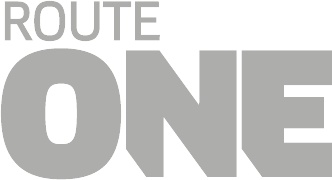Prentice of Haddington reveals how life has been during one year of the pandemic, and how shifting towards bus operation has kept the company going
At the beginning of the pandemic, coach work disappeared for Prentice of Haddington.
Managing Director Ross Prentice says it may come back. But he will be amazed if there is much in 2021. The priority for the coach side of the business over the next year or two (and maybe longer) is going to be educational work.
But the impact of that loss has been alleviated by a gradual shift in priorities. In the last five years, Prentice of Haddington has shifted more towards bus operation than coach (something even Ross did not wholly anticipate), a positive thing for the balance sheets. Not only has it given Ross extra confidence in his place as a coach and bus operator, it seems it was the best decision he could have made to protect the business during the pandemic.
A year in focus
Ross reveals that the first week in March 2020 was the busiest week Prentice of Haddington ever had for its bus services. Even at that point, COVID-19 was not the biggest of anyone’s concerns – it was not even mentioned during a planning meeting with the local authority. Within a matter of weeks, a national lockdown had been announced, and patronage had collapsed.
Two priorities occurred to Ross during that time. The first was to keep as many of the business’ staff employed as it could. The other was to continue transporting key workers on its bus services. These decisions were made before funding announcements, so every decision was made against the odds of tightening finances.
Coach, of which Prentice operates mainly educational work and private hire with local groups and incoming students, collapsed. But a gradual winding down of that work over recent years lessened the impact of its sudden dormancy.
“The coach side of our business had been getting quieter anyway. We’ve been concentrating on other things; there’s been more operators locally, we lost some school contracts, rates have been dropping and the pool of work had been shrinking. So it made a lot of sense to try new things.”
Prentice now operates eight bus routes in the East Lothian area and into Edinburgh and (when schools are open) home-to-school work. The return of schools in Scotland offers some degree of normalcy, and will be the business’ priority now, while meeting the challenge of social distancing.
Had the world stayed in a state of normalcy, Ross says the business now might consist of 25% coach and 75% bus.

The right decision
In some respects he didn’t actually want that shift. When services went out to tender in 2015, the operator was awarded a new route which included Edinburgh Infirmary. “I remember sitting and thinking ‘I don’t know if I want this’. It wasn’t really what we did. It was running into Edinburgh along mainline corridors, but we had the vehicles and the drivers and thought we would give it a go. That was the best thing that ever happened to us. That was the point things started to change. Until you try something you never know what it’s going to be like. I always thought running along mainline corridors and competing with larger operators would be difficult, but it turned out not to be as hard as I was expecting.”
Prentice’s place now is satisfying a need that isn’t catered for. That includes filling gaps in services, such as a direct bus between Haddington and Musselburgh – the first route Prentice took on commercially. Again, Ross remembers making that decision over a family dinner. “That was a massive risk, and I thought why not – let’s take it on.” That has been a great success, driven by confidence of the success of the Edinburgh line. “You begin to realise then that you can actually run a commercial bus service. There’s been no major plans to take on the world – it’s been about spotting opportunities and taking them when they arise.”
Local reputation has served Prentice well during the pandemic. That comes down to driver attitude and friendliness. Free travel for NHS employees ran for four months and helped Prentice give back to the community, and drivers played their part in spreading positive messages about bus travel, which has likely helped drive patronage back up.
Looking positive
Fellow operators have agreed that going down the bus route has been the right decision, at least given the last year’s events. “Sometimes fate can take you in certain ways,” Ross says.
Of course, running buses has not been a cakewalk. Patronage collapsed to approximately 10% of normal loadings during the first lockdown announcement. Services were taken off and journeys curtailed to 40-50% of regular mileage, until funding and furlough arrived to support the business.
Ross says the first four weeks proved the most difficult, with robust conversations needed with local authorities before the arrival of a grant to pay concessionary fares. When that arrived, Prentice was able to continue running, though was taking “virtually nothing” in revenue. “But that allowed us to keep ticking over until our conversations with council officers gradually climbed further up the tree. The stress went away after about a month, because we knew we were going to get paid – and as long as you can pay your bills, you have a fighting chance.”
In June, the Scottish COVID-19 Support Grand – Restart kicked in and helped the operator work its way to around 94% of regular mileage. “I’d hoped we might be able to get back to 100% at Easter, which might be slightly ambitious, but patronage has been relatively good compared to what I have heard from some other operators,” Ross says. “I don’t think you can criticise the support for the bus industry. Coach, of course, is a different matter.”
With passenger numbers climbing again, and the roadmap out of lockdown on the horizon, Ross says the signs are positive, and the growing popularity of the buses bodes well for when restrictions are lifted. “The passengers are still there and they still feel that it’s safe to travel,” he says.
On good days during the initial easing of restrictions, passenger numbers climbed to 60–65%. That was seen around August and September last year. Some days, it dropped to 50%. “Those sorts of ranges are not great by any means, but some larger operators were reporting 40-45% capacity on a good day,” says Ross. “I’m hopeful in time, and in not too long a time, we can get to a point that we can stand on our own two feet and not make a loss. That would be a good outcome.”

The future is bus?
In December, the operator took delivery of a pair of Alexander Dennis Enviro200 buses.
Prentice of Haddington is known for its new vehicle purchases. While he is not completely confident about new vehicle plans post-pandemic, he says he is still mindful of the necessity of new, cleaner vehicles. “Low Emission Zones are still coming. The world hasn’t stopped moving forward, and our vehicles are a year older now. There are some good deals to be had now, and that is often the time to purchase.”
Would Ross consider moving entirely to bus operation? A year ago, he would have said no. but now, he does not rule it out. “Sometimes a bit of everything isn’t always ideal – the haulage industry specialises in certain types of work, and that’s a case of people looking at it and thinking they can’t do everything.
“Do we need such a wide variety of work? I don’t know what will happen. But it’s not outside the realms of possibility.”
At the end of the day, for Ross, business is business, and sometimes sentimentality can get in the way of making the right decisions. Shifting to bus operation has helped that change in mentality.
“Sometimes it’s luck. Most of the time it’s about having the courage to give new things a try and approach your business as a business. You have to spot the opportunities and find where you can serve a need while making money.”























